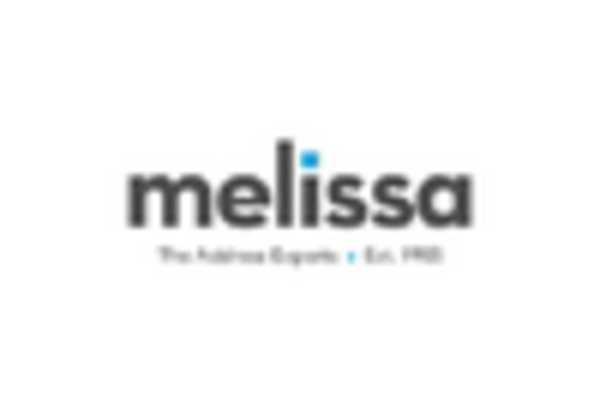The Fabric Toy Market is currently characterized by a dynamic competitive landscape, driven by innovation, sustainability, and digital transformation. Key players such as Fisher-Price (US), LEGO (DK), and Melissa & Doug (US) are actively shaping the market through strategic initiatives that emphasize product differentiation and consumer engagement. Fisher-Price (US) has focused on enhancing its product lines with educational features, while LEGO (DK) continues to expand its offerings with eco-friendly materials, reflecting a growing consumer preference for sustainable products. Meanwhile, Melissa & Doug (US) has been leveraging partnerships with educational institutions to promote its toys as learning tools, thereby positioning itself as a leader in the educational toy segment. Collectively, these strategies contribute to a competitive environment that prioritizes innovation and consumer-centric approaches.
In terms of business tactics, companies are increasingly localizing manufacturing to reduce lead times and enhance supply chain efficiency. This trend is particularly evident in the moderately fragmented structure of the Fabric Toy Market, where numerous players compete for market share. The collective influence of key players, including Gund (US) and Jellycat (GB), is notable as they adopt strategies that focus on quality and unique design elements, further intensifying competition.
In August 2025, LEGO (DK) announced the launch of a new line of fabric toys made from recycled materials, which aligns with its commitment to sustainability. This strategic move not only enhances LEGO's product portfolio but also positions the company as a frontrunner in the eco-conscious segment of the market. By integrating sustainability into its core offerings, LEGO (DK) is likely to attract environmentally aware consumers, thereby strengthening its market position.
In September 2025, Gund (US) unveiled a partnership with a prominent children's hospital to create a line of therapeutic fabric toys designed to provide comfort to young patients. This initiative underscores Gund's commitment to social responsibility and highlights the potential for fabric toys to serve therapeutic purposes. Such strategic actions may enhance brand loyalty and expand Gund's reach within the healthcare sector, illustrating the versatility of fabric toys beyond traditional play.
In July 2025, Jellycat (GB) launched an innovative digital platform that allows consumers to customize their fabric toys, thereby enhancing user engagement and personalization. This move reflects a broader trend towards digitalization in the toy industry, where companies are leveraging technology to create unique consumer experiences. By offering customization options, Jellycat (GB) is likely to differentiate itself in a crowded market, appealing to consumers seeking personalized products.
As of October 2025, the Fabric Toy Market is witnessing significant trends such as digitalization, sustainability, and the integration of artificial intelligence in product development. Strategic alliances among companies are increasingly shaping the competitive landscape, fostering innovation and collaboration. The shift from price-based competition to a focus on technological advancement and supply chain reliability is becoming evident. In this evolving environment, companies that prioritize innovation and sustainability are likely to emerge as leaders, redefining competitive differentiation in the Fabric Toy Market.


















Leave a Comment